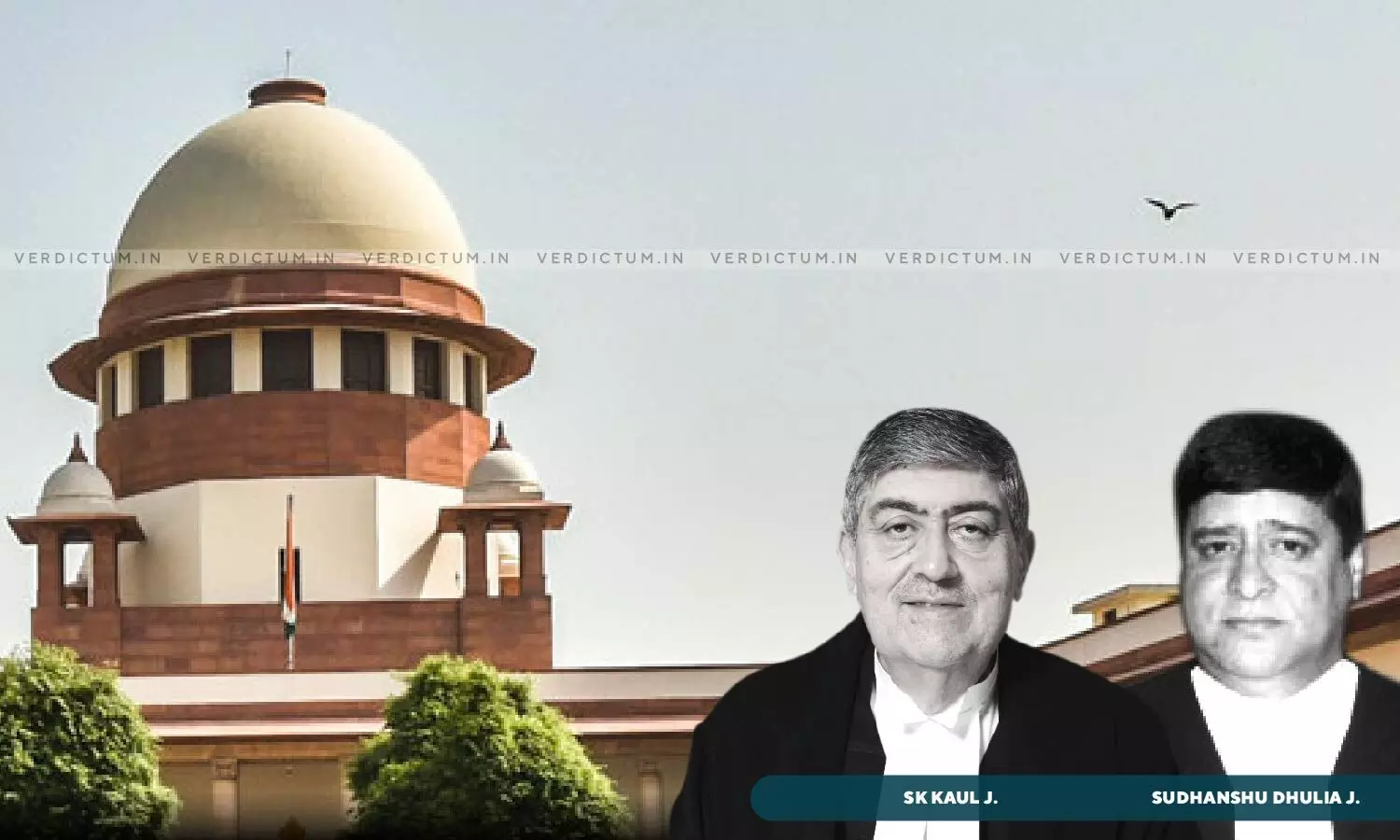
Benefit Of Juvenility Should Be Extended To Accused In Borderline Cases When Two Views Are Possible: Supreme Court
 |
|The Supreme Court observed that liberal view has to be adopted by extending the benefit of juvenility to the accused in borderline cases when two views are possible.
The court also added that the determination of a juvenile's age should be based on the date when the alleged crime was committed.
The court was considering appeal filed by an accused who was concurrently convicted under Sections 302 and 307, along with Section 34, of the Indian Penal Code 1860 (IPC). He had approached the Apex Court raising the plea of juvenility. Though he raised a similar plea before the Trial and Allahabad High Court, it was rejected.
The Court found that the Appellant was a juvenile at the time of the commission of the crime and partially allowed the Appeal. Considering that the appellant had already served 4.5 years in custody, exceeding the maximum sentence duration stipulated by the Juvenile Justice Act, 2000 (JJ Act), which is 3 years, the Court ordered the immediate release of the appellant.
“The age of a juvenile has to be determined on the basis of the date of the alleged commission of the crime..In a case of juvenility where two views are possible, this Court has held that a liberal approach should be undertaken”, the Bench comprising Justice Sanjay Kishan Kaul and Justice Sudhanshu Dhulia observed.
Advocate Vanshaja Shukla appeared for the Appellant and Additional Advocate General Ardhendumauli Kumar Prasad appeared for the Respondent/State.
The Appellant was convicted for offenses under Sections 302 and 307 read with Section 34 of the IPC and was sentenced to life imprisonment. The conviction and sentence of the Appellant were upheld in appeal by the High Court. Aggrieved, the Appellant approached the Apex Court challenging the order fo the High Court.
The Court noted that the Appellant claimed to be under 16, and was 18 years of age in his statement under Section 313 of the CrPC. A bone ossification test suggested the Appellant's age was around 19. Despite the discrepancy, the Trial Court denied him juvenility, leading to convictions.
The Bench observed that the age of a juvenile must be determined based on the date of the alleged crime, not the date when the person is brought before the court or authority. This means that the JJ Act, was in force at the time of the crime. The Act defined a juvenile as a person who has not completed 18 years of age on the date of the commission of the offense. The Juvenile Justice (Care and Protection of Children) Rules, 2007 (Rules 2007), provide a detailed procedure for determining the age of a juvenile.
The Court further noted that if the age of a juvenile is found to be below 18 years on the date of the offense, the court or Board must declare the status of the juvenile and pass an appropriate order in the interest of the juvenile. The Bench observed that the applicable law for determining the age of the Appellant would be the JJ Act, and Rules, 2007.
However, the Court noted that the High Court and the Additional Sessions Judge did not consider the provisions of Rule 12 of the Rules 2007, which states that if the exact assessment of the age cannot be done, the benefit should be given to the child or juvenile by considering his/her age on the lower side within the margin of one year.
The Cout, after careful consideration of conflicting evidence, concluded that the Appellant was a juvenile at the time of the crime. The Court referred to the case of Arnit Das v State of Bihar [(2000) 5 SCC 488], and emphasized that a hypertechnical approach should be avoided, and if there are two possible interpretations of the evidence regarding juvenility, the court should lean towards considering the accused as a juvenile, especially in borderline cases.
Accordingly, the Court partly allowed the Appeal.
Cause Title: Pawan Kumar v State Of Uttar Pradesh & Ors. (2023 INSC 1012)